What Are The Unique Health Benefits Of A Neem Tree – ”Dogon Yaro”
Azadirachta indica, commonly known as neem, neem tree ,is a tree in the mahogany family Meliaceae. It is one of two species in the genus Azadirachta, and is native to the Indian subcontinent.
It is typically grown in tropical and semi-tropical regions. Neem trees also grow in islands located in the southern part of Iran. Its fruits and seeds are the source of neem oil.
There are also a large number of amazing neem tree health benefits to our human body listed below in this article.
Neem Tree Health Benefits
Neem is a fast-growing tree that can reach a height of 15–20 metres (49–66 ft), and rarely 35–40 metres (115–131 ft). It is evergreen, but in severe drought it may shed most or nearly all of its leaves. The branches are wide and spreading. The fairly dense crown is roundish and may reach a diameter of 20–25 metres (66–82 ft). The neem tree is very similar in appearance to its relative, the Chinaberry (Melia azedarach).
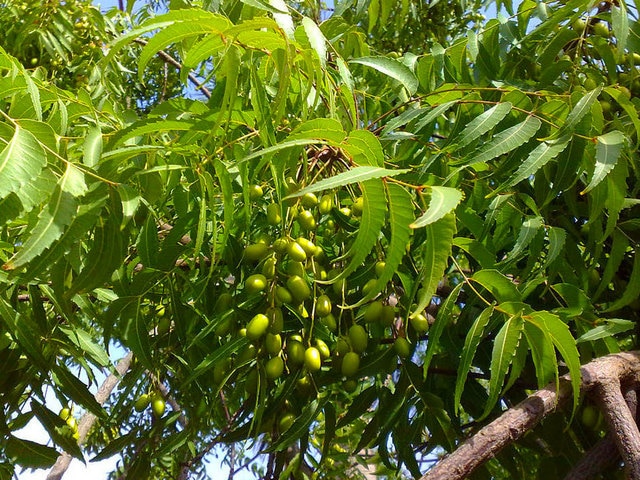
neem tree
The opposite, pinnate leaves are 20–40 centimetres (7.9–15.7 in) long, with 20 to 30 medium to dark green leaflets about 3–8 centimetres (1.2–3.1 in) long. The terminal leaflet often is missing. The petioles are short.
The (white and fragrant) flowers are arranged in more-or-less drooping axillary panicles which are up to 25 centimetres (9.8 in) long. The inflorescences, which branch up to the third degree, bear from 250 to 300 flowers. An individual flower is 5–6 millimetres (0.20–0.24 in) long and 8–11 millimetres (0.31–0.43 in) wide. Protandrous, bisexual flowers and male flowers exist on the same individual tree.
The fruit is a smooth (glabrous), olive-like drupe which varies in shape from elongate oval to nearly roundish, and when ripe is 1.4–2.8 centimetres (0.55–1.10 in) by 1.0–1.5 centimetres (0.39–0.59 in). The fruit skin (exocarp) is thin and the bitter-sweet pulp (mesocarp) is yellowish-white and very fibrous. The mesocarp is 0.3–0.5 centimetres (0.12–0.20 in) thick. The white, hard inner shell (endocarp) of the fruit encloses one, rarely two, or three, elongated seeds (kernels) having a brown seed coat.
The neem tree is often confused with a similar looking tree called bakain. Bakain also has toothed leaflets and similar looking fruit. One difference is that neem leaves are pinnate but bakain leaves are twice- and thrice-pinnate.
Evidential Uses Of Neem Tree
As a vegetable
The tender shoots and flowers of the neem tree are eaten as a vegetable in India. A souplike dish called Veppampoo charu (Tamil) (translated as “neem flower rasam”) made of the flower of neem is prepared in Tamil Nadu. In Bengal, young neem leaves are fried in oil with tiny pieces of eggplant (brinjal). The dish is called neem begun bhaja and is the first item during a Bengali meal that acts as an appetizer. It is eaten with rice.
Neem is used in parts of mainland Southeast Asia, particularly in Cambodia aka sdov—ស្ដៅវ,Laos (where it is called kadao), Thailand (where it is known as sa-dao (สะเดา) or sdao), Myanmar (where it is known as tamar) and Vietnam (where it is known as sầu đâu and is used to cook the salad gỏi sầu đâu). Even if lightly cooked, the flavour is quite bitter and the food is not enjoyed by all inhabitants of these nations, though it is believed to be good for one’s health. Neem gum is a rich source of protein. In Myanmar, young neem leaves and flower buds are boiled with tamarind fruit to soften its bitterness and eaten as a vegetable. Pickled neem leaves are also eaten with tomato and fish paste sauce in Myanmar.
Medicinal Use Traditionally
Products made from neem trees have been used in India for over two millennia for their medicinal properties.Neem products are believed by Siddha and Ayurvedic practitioners to be anthelmintic, antifungal, antidiabetic, antibacterial, contraceptive, and sedative.It is considered a major component in Siddha medicine and Ayurvedic and Unani medicine and is particularly prescribed for skin diseases.Neem oil is also used for healthy hair, to improve liver function, detoxify the blood, and balance blood sugar levels.Neem leaves have also been used to treat skin diseases like eczema, psoriasis, etc.
Insufficient research has been done to assess the purported benefits of neem, however.In adults, short-term use of neem is safe, while long-term use may harm the kidneys or liver; in small children, neem oil is toxic and can lead to death.Neem may also cause miscarriages, infertility, and low blood sugar.
Besides its use in traditional Indian medicine, the neem tree is of great importance for its anti-desertification properties and possibly as a good carbon dioxide sink.
Pest and disease control
Neem is a key ingredient in non-pesticidal management (NPM), providing a natural alternative to synthetic pesticides. Neem seeds are ground into powder that is soaked overnight in water and sprayed onto the crop. To be effective, it must be applied repeatedly, at least every ten days. Neem does not directly kill insects on the crop. It acts as an anti-feedant, repellent, and egg-laying deterrent and thus protect the crop from damage. The insects starve and die within a few days. Neem also suppresses the hatching of pest insects from their eggs. Neem-based fertilizeres have been effective against the pest southern armyworm. Neem cake is often sold as a fertilizer.Neem oil has been shown to avert termite attack as an ecofriendly and economical agent.Neem leaves are dried in India and placed in cupboards to prevent insects eating the clothes, and also in tins where rice is stored.
Neem oil for polymeric resins
Applications of neem oil in the preparation of polymeric resins have been documented in the recent reports. The synthesis of various alkyd resins from neem oil is reported using a monoglyceride (MG) route and their utilization for the preparation of PU coatings.The alkyds are prepared from reaction of conventional divalent acid materials like phthalic and maleic anhydrides with MG of neem oil.
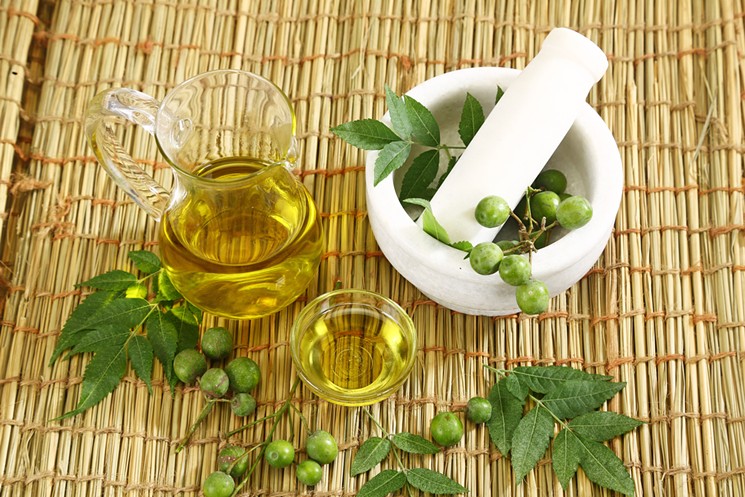
neem oil
Construction
The juice of this plant is a potent ingredient for a mixture of wall plaster, according to the Samarāṅgaṇa Sūtradhāra, which is a Sanskrit treatise dealing with Śilpaśāstra (Hindu science of art and construction).
Toothbrush
Traditionally, slender neem twigs (called datun) are first chewed as a toothbrush and then split as a tongue cleaner. This practice has been in use in India, Africa, and the Middle East for centuries. It is still used in India’s rural areas. Neem twigs are still collected and sold in rural markets for this use. It has been found to be as effective as a toothbrush in reducing plaque and gingival inflammation.
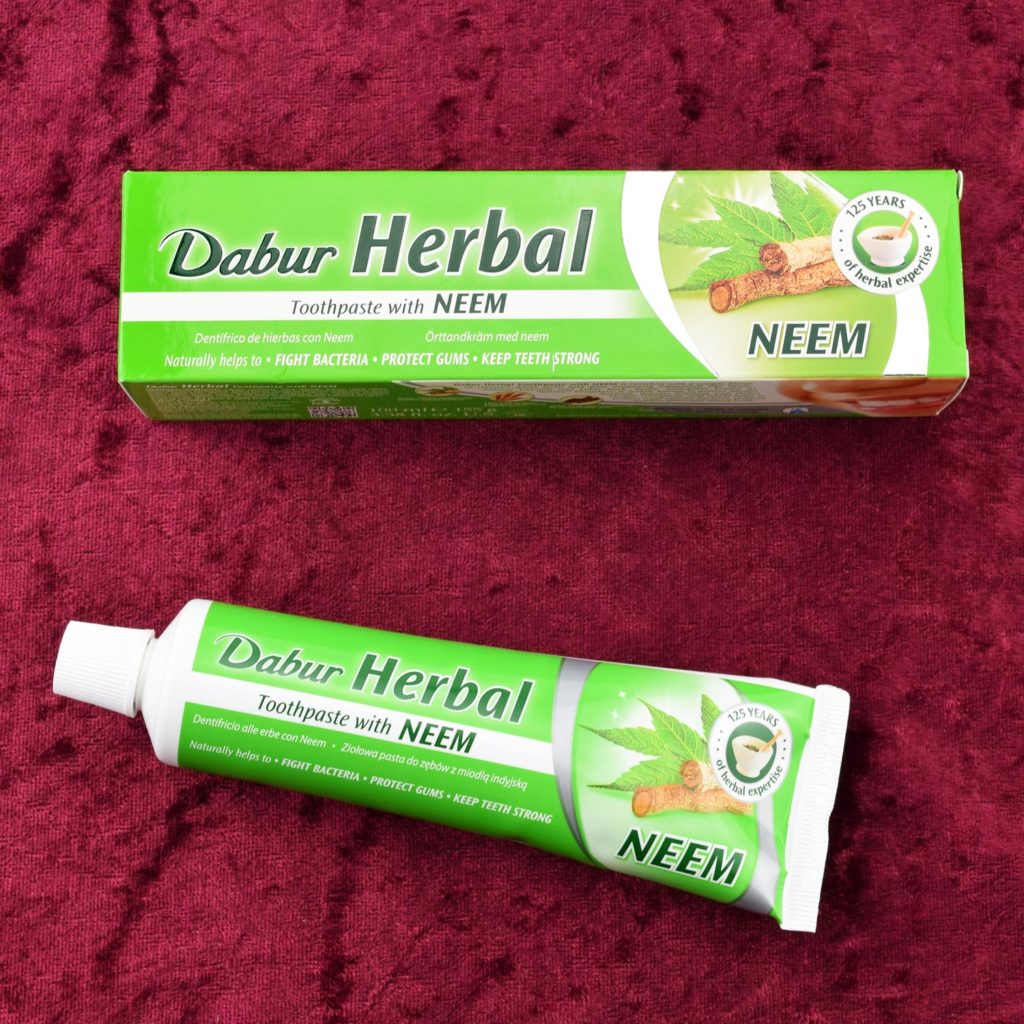
neem toothpaste
Fertilizer
Neem extract is added to fertilizers (urea) as a nitrification inhibitor.
Soap
80% of India’s supply of neem oil now is used by neem oil soap manufacturers.Although much of it goes to small-scale speciality soaps, often using cold-pressed oil, large-scale producers also use it, mainly because it is cheap. Additionally it is antibacterial and antifungal, soothing, and moisturising. It can be made with up to 40% neem oil.Generally, the crude oil is used to produce coarse laundry soaps.
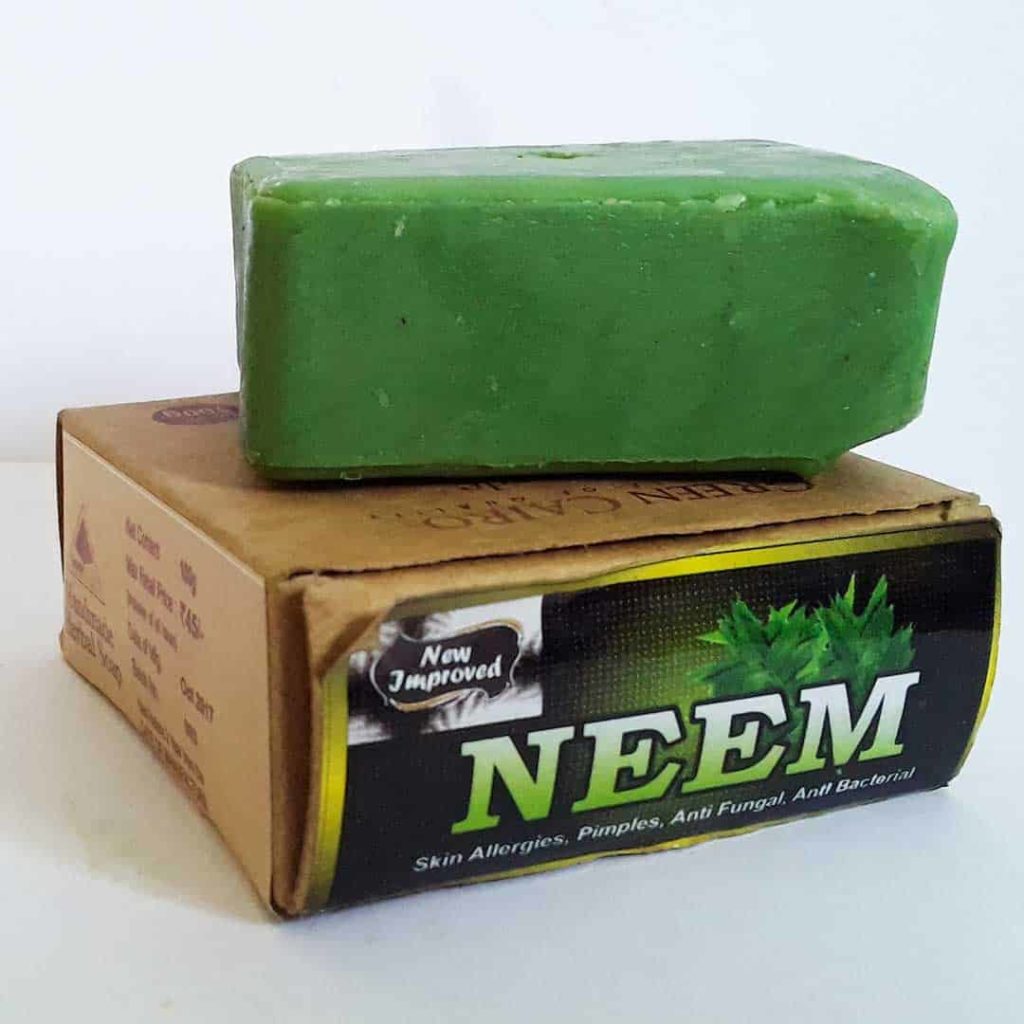
neem produced soap
Animal feed
Neem leaves can be occasionally used as forage for ruminants and rabbits.
Ecology Of Neem Tree
The neem tree is noted for its drought resistance. Normally it thrives in areas with sub-arid to sub-humid conditions, with an annual rainfall of 400–1,200 millimetres (16–47 in). It can grow in regions with an annual rainfall below 400 mm, but in such cases it depends largely on ground water levels. Neem can grow in many different types of soil, but it thrives best on well drained deep and sandy soils. It is a typical tropical to subtropical tree and exists at annual mean temperatures of 21–32 °C (70–90 °F). It can tolerate high to very high temperatures and does not tolerate temperature below 4 °C (39 °F). Neem is one of a very few shade-giving trees that thrive in drought-prone areas e.g. the dry coastal, southern districts of India, and Pakistan. The trees are not at all delicate about water quality and thrive on the merest trickle of water, whatever the quality. In India and tropical countries where the Indian diaspora has reached, it is very common to see neem trees used for shade lining streets, around temples, schools and other such public buildings or in most people’s back yards. In very dry areas the trees are planted on large tracts of land.
Weed status
Neem is considered a weed in many areas, including some parts of the Middle East, most of Sub-Saharan Africa including West Africa and Indian Ocean states, and some parts of Australia. Ecologically, it survives well in similar environments to its own, but its weed potential has not been fully assessed.
In April 2015, A. indica was declared a class B and C weed in the Northern Territory, Australia, meaning its growth and spread must be controlled and plants or propagules are not allowed to be brought into the NT. It is illegal to buy, sell, or transport the plants or seeds. Its declaration as a weed came in response to its invasion of waterways in the “Top End” of the territory.
After being introduced into Australia, possibly in the 1940s, A. indica was originally planted in the Northern Territory to provide shade for cattle. Trial plantations were established between the 1960s and 1980s in Darwin, Queensland, and Western Australia, but the Australian neem industry did not prove viable. The tree has now spread into the savanna, particularly around waterways, and naturalised populations exist in several areas.
Credit:
https://en.wikipedia.org/wiki/Azadirachta_indica


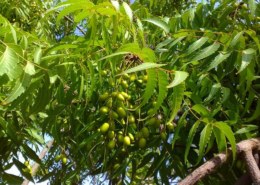
Leave an answer
You must login or register to add a new answer.